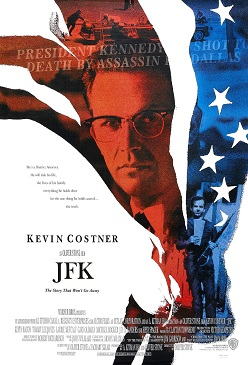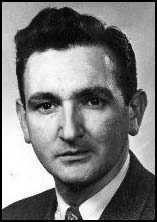Synopsis
Rendezvous with Death features interviews with four Cuban former secret service agents and an American FBI agent, and also cites documents from KGB and Mexican government archives.
A possible Cuban connection was investigated by the US immediately after Kennedy's death. But an FBI officer sent to follow the Oswald's trail during a visit to Mexico was recalled after only three days and the investigation called off. Laurence Keenan, now 81, said it was "perhaps the worst investigation the FBI was ever involved in". "I realised that I was used. I felt ashamed. We missed a moment in history," Mr Keenan said.
Veteran US official Alexander Haig told the filmmaker that Kennedy's successor, Lyndon B. Johnson, believed Cuba was to blame and feared a pronounced swing to the right if the truth were known that would keep the Democrats out of power for a long time. Mr Haig - a US military adviser at the time and later a secretary of state - told the filmmakers Johnson said: "We must simply not allow the American people to believe Fidel Castro could have killed our president. [...] He [Johnson] was convinced Castro killed Kennedy and he took it to his grave."

Jack Leon Ruby was an American nightclub owner who killed Lee Harvey Oswald on November 24, 1963, two days after Oswald was accused of assassinating President John F. Kennedy. Ruby shot and mortally wounded Oswald on live television in the basement of Dallas Police Headquarters and was immediately arrested.

Lee Harvey Oswald was a U.S. Marine veteran who assassinated John F. Kennedy, the 35th president of the United States, on November 22, 1963.

JFK is a 1991 American epic political thriller film written and directed by Oliver Stone. It examines the investigation into the assassination of John F. Kennedy by New Orleans district attorney Jim Garrison, who came to believe there was a conspiracy to assassinate President Kennedy and that Lee Harvey Oswald was a scapegoat.

The President's Commission on the Assassination of President Kennedy, known unofficially as the Warren Commission, was established by President Lyndon B. Johnson through Executive Order 11130 on November 29, 1963, to investigate the assassination of United States President John F. Kennedy that had taken place on November 22, 1963.

On November 22, 1963, John F. Kennedy, the 35th president of the United States, was assassinated while riding in a presidential motorcade through Dealey Plaza in Dallas, Texas. Kennedy was in the vehicle with his wife Jacqueline, Texas governor John Connally, and Connally's wife Nellie, when he was fatally shot from the nearby Texas School Book Depository by Lee Harvey Oswald, a former U.S. Marine. The motorcade rushed to Parkland Memorial Hospital, where Kennedy was pronounced dead about 30 minutes after the shooting; Connally was also wounded in the attack but recovered. Vice President Lyndon B. Johnson was hastily sworn in as president two hours and eight minutes later aboard Air Force One at Dallas Love Field.

Everette Howard Hunt Jr. was an American intelligence officer and author. From 1949 to 1970, Hunt served as an officer in the Central Intelligence Agency (CIA), where he was a central figure in U.S. regime change in Latin America including the 1954 Guatemalan coup d'état and the 1961 Bay of Pigs Invasion in Cuba. Along with G. Gordon Liddy, Frank Sturgis, and others, Hunt was one of the Nixon administration's so-called White House Plumbers, a team of operatives charged with identifying government leaks to outside parties.

The United States House of Representatives Select Committee on Assassinations (HSCA) was established on September 15, 1976 by U.S. House Resolution 1540 to investigate the assassinations of John F. Kennedy and Martin Luther King Jr. in 1963 and 1968, respectively. The select committee was first formed by the 94th United States Congress, and expired at the end of the 95th Congress.

Santo Trafficante Jr. was among the most powerful Mafia bosses in the United States. He headed the Trafficante crime family from 1954 to 1987 and controlled organized criminal operations in Florida and Cuba, which had previously been consolidated from several rival gangs by his father, Santo Trafficante Sr.

The Fair Play for Cuba Committee (FPCC) was an activist group set up in New York City by Robert Taber in April 1960. It was active in both the USA and Canada.

David William Ferrie was an American pilot who was alleged by New Orleans District Attorney Jim Garrison to have been involved in a conspiracy to assassinate President John F. Kennedy. Garrison also alleged that Ferrie knew Lee Harvey Oswald. Ferrie denied any involvement in a conspiracy and said he never knew Oswald. Decades later, photos emerged establishing that Ferrie had been in the same Civil Air Patrol unit as Oswald in the 1950s, but critics have argued this does not prove that either Ferrie or Oswald was involved in an assassination plot.
Carlos Jose Bringuier is a Cuban exile in the United States who campaigned against Fidel Castro's government. Bringuier is principally known for his brief connection with Lee Harvey Oswald, the assassin of US President John F. Kennedy.

William Guy Banister was an employee of the Federal Bureau of Investigation (FBI), an assistant superintendent of the New Orleans Police Department, and a private investigator. After his death, New Orleans district attorney Jim Garrison alleged that he had been involved in the assassination of John F. Kennedy. He was an avid anti-communist, alleged member of the Minutemen, the John Birch Society, Louisiana Committee on Un-American Activities, and alleged publisher of the Louisiana Intelligence Digest which maintained that the civil rights movement was part of an international communist conspiracy and was treasonous.

On March 1, 1967, New Orleans District attorney Jim Garrison arrested and charged New Orleans businessman Clay Shaw with conspiring to assassinate President Kennedy, with the help of Lee Harvey Oswald, David Ferrie, and others. On January 29, 1969, Shaw was brought to trial in Orleans Parish Criminal Court on these charges. On March 1, 1969, a jury took less than an hour to find Shaw not guilty. It remains the only trial to be brought for the assassination of President Kennedy.

Ilona Marita Lorenz was a German woman who had an affair with Fidel Castro in 1959 and in January 1960 was involved in an assassination attempt by the CIA on Castro's life.

Eldon Dean Rudd was a U.S. Republican politician.
The CIA Kennedy assassination is a prominent John F. Kennedy assassination conspiracy theory. According to ABC News, the Central Intelligence Agency (CIA) is represented in nearly every theory that involves American conspirators. The secretive nature of the CIA, and the conjecture surrounding the high-profile political assassinations in the United States during the 1960s, has made the CIA a plausible suspect for some who believe in a conspiracy. Conspiracy theorists have ascribed various motives for CIA involvement in the assassination of President Kennedy, including Kennedy's firing of CIA director Allen Dulles, Kennedy's refusal to provide air support to the Bay of Pigs invasion, Kennedy's plan to cut the agency's budget by 20 percent, and the belief that the president was weak on communism. In 1979, the House Select Committee on Assassinations (HSCA) concluded that the CIA was not involved in the assassination of Kennedy.

The assassination of John F. Kennedy on November 22, 1963, has spawned numerous conspiracy theories. These theories allege the involvement of the CIA, the Mafia, Vice President Lyndon B. Johnson, Cuban Prime Minister Fidel Castro, the KGB, or some combination of these individuals and entities. Some conspiracy theories have alleged a coverup by parts of the federal government, such as the original FBI investigators, the Warren Commission, or the CIA. Former Los Angeles District Attorney Vincent Bugliosi estimated that a total of 42 groups, 82 assassins, and 214 people had been accused at one time or another in various conspiracy scenarios.
Silvia Odio del Torro is a Cuban-American who provided testimony to the Warren Commission investigating the assassination of John F. Kennedy that Lee Harvey Oswald was one of three strangers who visited her Dallas, Texas apartment in September 1963 to solicit money for the anti-Castro counterrevolutionary group JURE.

The United States' Central Intelligence Agency (CIA) made numerous unsuccessful attempts to assassinate Cuban leader Fidel Castro. There were also attempts by Cuban exiles, sometimes in cooperation with the CIA. The 1975 Church Committee claimed eight proven CIA assassination attempts between 1960 and 1965. In 1976, President Gerald Ford issued an Executive Order banning political assassinations. In 2006, Fabián Escalante, former chief of Cuba's intelligence, stated that there had been 634 assassination schemes or attempts. The last known plot to assassinate Castro was by Cuban exiles in 2000.
Viola June Cobb was an American informant for the CIA. She worked at Fidel Castro's headquarters in Havana as a translator and public relations worker in 1959 and 1960. After leaving Cuba, Cobb continued working for the CIA in Guatemala and Mexico. She was the first CIA asset to relay an account of Lee Harvey Oswald having attended a twist party in Mexico City weeks before the assassination of John F. Kennedy. Earlier in the 1950s, Cobb was involved with the production and trafficking of narcotics with her Colombian fiancé and his twin brother. She later provided information to the US Federal Bureau of Narcotics that led to arrests in Cuba and Colombia.















